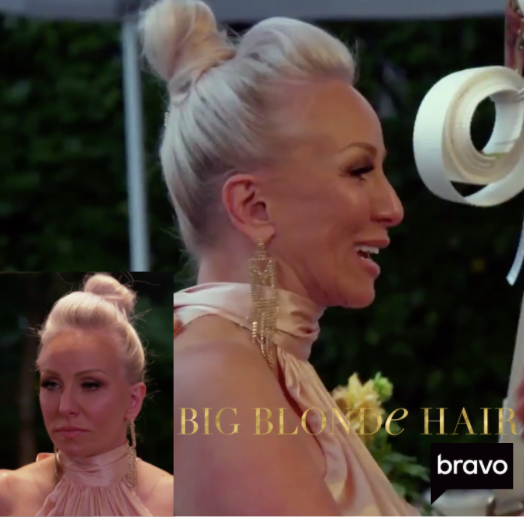
There was a time when heirs were excited to receive their parents’ and grandparents’ most prized possessions. Their fine bone china, lead crystal, and sterling silver were not only welcomed but proudly displayed and regularly used.
If we didn’t have room in our homes, we either passed them on to relatives or store them in our attic or basement as a way of preserving them to pass on to our kids someday.
Sentimental Items: The Heartbreak of Unwanted Heirlooms
But if you have adult children, you probably know by now that they don’t want our stuff… And that hurts!
You’ve loved those items, used them, and cared for them. You looked forward to giving them to your kids at some point in the future. You’ve even held onto them for all these years along with the many other things that you accumulated, fully expecting that once they were grown and had their own homes, your kids would need them and welcome them into their homes just as you did many years ago.
But, for the most part, our kids clearly do not want our stuff. Why not? What happened?
As baby boomers, who are now in the process of downsizing and decluttering our homes and our stuff, we are faced with the harsh reality that our kids don’t want our belongings, and we are trying to understand why not.
A Historical Perspective Might Help
It’s helpful to understand how unique generational values, tastes, and priorities have changed and how they have influenced the way our kids feel and respond to receiving cherished belongings passed down from one generation to the next.
It’s also helpful to try to uncover the reasons why our kids have little or no interest in our stuff.
It’s important that we learn to adapt to this changing dynamic while also helping our kids understand the value and importance of passing down some of our most cherished belongings.
The challenge lies in bridging the gap between our sentimental valuing of family heirlooms and the changing preferences of today’s younger generations to reject these items… And what that might mean for future generations.
How can we preserve the essence of our family history while adapting to these evolving trends?
It’s important that we get into the minds of each generation to make thought-provoking comparisons that will help us begin to understand the different viewpoints and values that have played a significant role in shaping their attitudes and approach to preserving treasures passed down through the family.
An Overview of Generational Differences
Note: The generational split is according to Pew Research Center.
Traditionalists/Silent Generation, Born 1928 to 1945
This generation grew up during the Great Depression and World War II. They were influenced by a time of great scarcity and developed a frugal mindset. They were resourceful and valued a simple life, hard work, and family. Their few possessions were valued for their practicality, usefulness, and longevity.
Baby Boomer Generation, Born 1947 to 1964
Baby boomers grew up in the Post-War Era, a time of great economic growth. This led to consumerism and the desire to own and accumulate many possessions. To baby boomers these items came to represent success, status, and security. While they valued hard work, it often became the center of their life and identity, leaving little time for family and work-life balance.
Generation X, Born 1965-1980
Gen X grew up during the Information Age. They were influenced by the rise of early technology, instant gratification, and the beginning of social media. While they appreciate material goods, they do not prioritize stuff as much as their parents do and value a more minimalist aesthetic. They prioritize experiences over physical possessions and value a balance of hard work with time to live life fully.
Gen Y/Millennials, Born 1981 to 1996
Millennials grew up with technology in the Digital Age, leading to a new kind of clutter, digital clutter such as emails, texts, photos, and social media. They value experiences over material possessions and have little reverence for stuff from the past. They value sustainability, a simpler, more minimalist environment, work-life balance, and work that aligns with their core values for professional growth.
Gen Z, Born 1997 to 2012
This generation was born into the Digital Age and grew up with easy/quick access to technology and the Internet. They value meaningful work, individuality, authenticity, sustainability, and borrowing, renting, or repurposing items rather than buying new.
Times Have Changed
What is valuable and sentimental to us is not the same for our kids. They value different things. Their tastes, styles, priorities, and attitudes are different from ours.
How Our Baby Boomer Generation DIFFERS from Younger Generations
First, let’s examine how our generation is different from the ones that came after us.
Physical Possessions
Younger generations do not value physical possessions the same way we do. Their minimalist aesthetic does not allow room for clutter and excess stuff that takes up room with things they don’t want, need, or will not use. Their perspective on possessions is that they must be useful and serve a purpose.
** The stuff we pass down will overwhelm their simpler lifestyle.
Emotional Attachment
They are not emotionally attached to stuff like we are. They are mostly detached from physical possessions because, to them, it is just “stuff” that can easily and quickly be replaced, borrowed, or rented if needed.
They don’t value stuff that they may not need or might not use.
Smaller Homes and Living Spaces
They value living in smaller, more affordable homes with less stuff, unlike the large homes they grew up in filled with lots of stuff. Additionally, the higher cost of homes and mortgages makes it unfeasible and impractical for them to take in our large furniture, rugs, artwork, etc.
Our large furniture would overwhelm their smaller homes.
Experiences, Not Stuff
Our grown-up kids value spending their money on experiences, creating new memories rather than buying more stuff that requires their time, money, and energy.
We prioritize stuff, they prioritize quality time.
Accumulation
They choose not to accumulate possessions the way we have done. “Less is more,” “one in, one out” is their mantra. Owning fewer possessions is more manageable, peaceful, and takes less time, money, and energy to maintain.
Our consumer habits of buying more led to too much stuff, stress, and overwhelm.
Minimalism
They prefer a minimalist lifestyle and aesthetic. They choose to live with less, and therefore, have less clutter and are more organized and efficient.
Inheriting large amounts of possessions would overwhelm their lives and lifestyle.
Clutter
They want to avoid the burden of physical and mental clutter and the stress associated with it.
By refusing to accept our heirlooms, they are intentionally trying to avoid cluttering their own smaller homes.
Sustainability
They respect the environment and don’t like wasting stuff. If they don’t need it, if they won’t use it, they choose not to buy it.
If they inherit our stuff that they will not use, they will likely donate it or dispose of it.
Excess Stuff
They do not value holding onto stuff “just in case” they might need it someday. They prefer to use what they have and not become a repository for excess stuff. Their smaller homes do not warrant it, and they prefer to avoid the additional expense of a storage unit if at all possible. If they need something, they are willing to borrow it or rent it if necessary.
They do not want to fill their attics, basements, garages with “just-in-case” stuff like we did.
Simple Living
They prioritize living simply with less stuff to have more time, money, and freedom for what matters most to them.
As baby boomers, we, too, are trying to downsize and declutter to live a simpler life with less stuff and less stress.
How Our Baby Boomer Generation Is SIMILAR to the Younger Generations
But, despite the differences, there are also many similarities that we share.
Starting to Downsize
As we baby boomers start to downsize and declutter our homes, we are purging the excess stuff in our lives to make room for less stuff and less stress. By rebelling against family heirlooms, our kids are trying to prevent the burden of clutter, filling basements, attics, and garages with boxes and bins that will likely not get opened for many years.
Putting More Value on Experiences
As baby boomers become empty nesters, retire, and enter into our third act, we choose to seek new experiences that are meaningful and create new memories.
Moving to Smaller Homes
Many baby boomers are downsizing to smaller, more manageable, and more affordable homes to have fewer expenses and less maintenance and upkeep.
Intentional Living
As we age, we need less, and we buy less. What we do buy is more intentional, less impulsive. We are spending money on what is truly important to us.
Living in the Digital Age
Baby boomers are discovering the many advantages of using technology to digitize photos, old film, and documents. By using the cloud for storage, we prevent the need for the many boxes and bins in our basements.
Steps to Bridge the Gap
#1: Take an Inventory
Take a thorough inventory of your home, what you want, what you will use, and what you don’t want and won’t use. If you are downsizing, take into account only what you will need, what will fit, and look good in your new smaller space. There is no sense in taking more than what will fit as you will only overcrowd your new home and make it feel cluttered.
#2: Open Up the Door to Conversations
Following the methodology in Margareta Magnusson’s book, The Gentle Art of Swedish Death Cleaning, invite your kids to your home to walk through and ask them which items they DO want.
Then, let them tell you what they DON’T want. Keep an open mind and a cool head. Promise yourself to be OK with the fact that they don’t want certain things. Don’t be offended if they don’t want something and if they’re brutally honest with you because this gives you the freedom to let go of those things that you might have been holding onto, assuming they would want them someday. They don’t. Let it go.
This is the perfect opportunity to share stories about particular pieces of furniture, artwork, etc., that are meaningful to you and why. It is also a perfect opportunity to have them share with you what particular items have meaning to them and why. You will likely be surprised by the items they choose and find meaningful: their childhood toys, selected artwork, greeting cards, or projects they might’ve given you from grade school!
These heart-to-heart conversations open the door to sharing stories about your family history and values, stories they may never have heard before that will help them develop a newfound respect and appreciation for your treasured possessions and family heritage.
#3: Invite Family and Close Friends
Just like you did with your kids, invite family and close friends to walk through your home and choose what they might want from the things you don’t want or your kids don’t want. You might also want to share stories with them about why they’ve meant so much to you. Make sure to set a date for them to pick up and remove those items from your home.
#4: Donations
Donate the remaining items to charities that closely align with your values so that you know someone wants, needs, and will use what you are giving away, i.e., women’s shelters, veterans’ homes, Habitat for Humanity, or others. Ideally, they will make arrangements to pick up, saving you time, energy, and expense.
#3: Disposal
Dispose of any remaining items. It might be helpful to have a Clean Out specialist come to help with this final effort.
Finding the Common Ground
Preserving our family heritage isn’t just about passing down physical items. It’s about taking time to share stories and our values too.
By finding common ground between our sentimental side and their desire to redefine how family treasures are passed down, we can ensure that our family legacy will live on long after we’re gone.
Let’s embrace this challenge, consider it a teaching moment, an opportunity to listen, learn, and grow closer to our kids by having meaningful conversations where both sides are heard… knowing that together, we are keeping the spirit and essence of our family alive for many generations to come.
Let’s Have a Conversation:
Have you had the family heirlooms conversation with your grown up kids yet? What was it like? Were you surprised to learn about stuff they want/don’t want from you?





